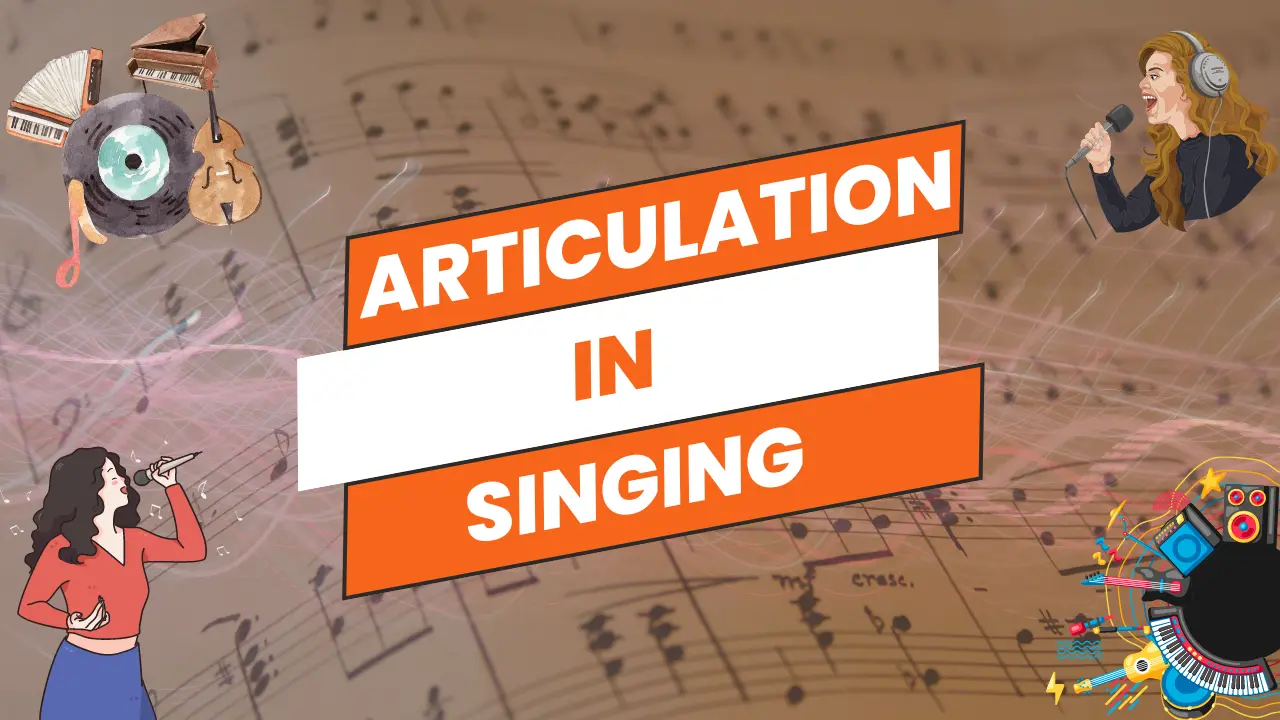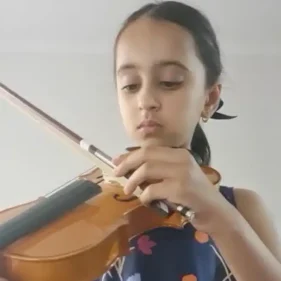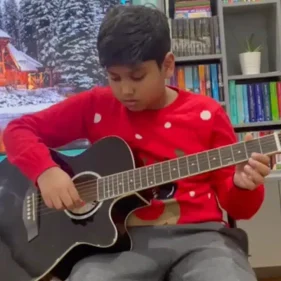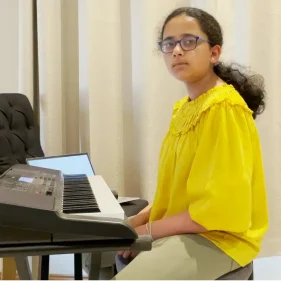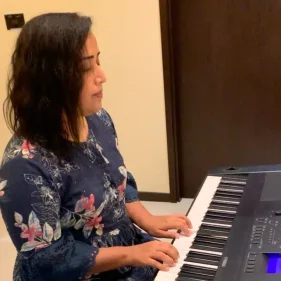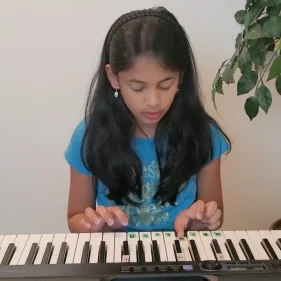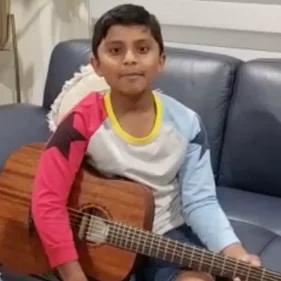- What Does Articulation Mean In Music Theory?
- What Are The Articulations In Music Symbols?
- How To Understand Articulation Marking or Articulation Symbols?
- What Are The Types Of Articulations In Music?
- What Is Sole Articulation Music?
- Why Is Articulation In Music So Important?
- Is Articulation Important In Singing?
- Tips For Improving Articulation In Singing
- What Are Vocal Articulation Exercises For Singers?
- Conclusion
- FAQs
I was fascinated when I learnt that Articulation- music comes from the latin word ‘articulato’. It apparently means ‘joined’ or ‘divided’. When we sing or play an instrument, the notes or the phrases get striked or sustained or released in a specific way. This phenomenon is called articulation in music. Singers need to get a hold of articulation just for the purpose of making a song’s emotion and intended meaning be communicated correctly.
Some singers’ Articulation singing is quite impeccable with clear pronunciations and every note crisply delivered. Wondering how to get there? This text will give you a clear picture of what Articulation markings, Articulation symbols. Also, let’s look into what is Articulations in music theory is, its types with images and some of the sheet music terms.
What Does Articulation Mean In Music Theory?
In simple words, Articulation in music refers to the way musical notes and phrases are played or sung in terms of precision and clarity. While doing that it is absolutely necessary to protect the melody of the song and its intended emotion.
Articulations guides a performer on how to approach a note in a passage on the basis of its length, emphasis and smoothness. So it’s not only builds character but also shapes up the expression of the piece of music. As a music tutor, I always emphasize on the importance of Articulation singing to make sure my learners attract the audience when they perform. It’s best to learn some of the sheet music terms.
What Are The Articulations In Music Symbols?
The symbols of Articulation provides instructions on how that particular Articulation markings needs to be interpreted and played. These symbols graphically represent the indications to shape expression and emotion in that piece of music. Understanding Articulation symbols guides a singer or an instrumentalist how each note should be sung or played.
How To Understand Articulation Marking or Articulation Symbols?
I should probably take you through the different types of Articulation of music. It’s absolutely necessary to recognize these Articulation markings. They give you the directions about how each note needs to be treated. Instructions more than directions, to be precise, on how to articulate the piece of music in terms of attack and release.
So here’s an elaborate guide on some of the important Articulation symbols that you need to know.
What Are The Types Of Articulations In Music?
My tutor used to stress on the fact that ‘proper Articulation music makes a performance dynamic and alive. Like I have mentioned above, Articulation in music helps in creating expression and emotional impact with the help of Dynamics. Here are some of the sheet music terms, the most common types of Articulations.
Staccato
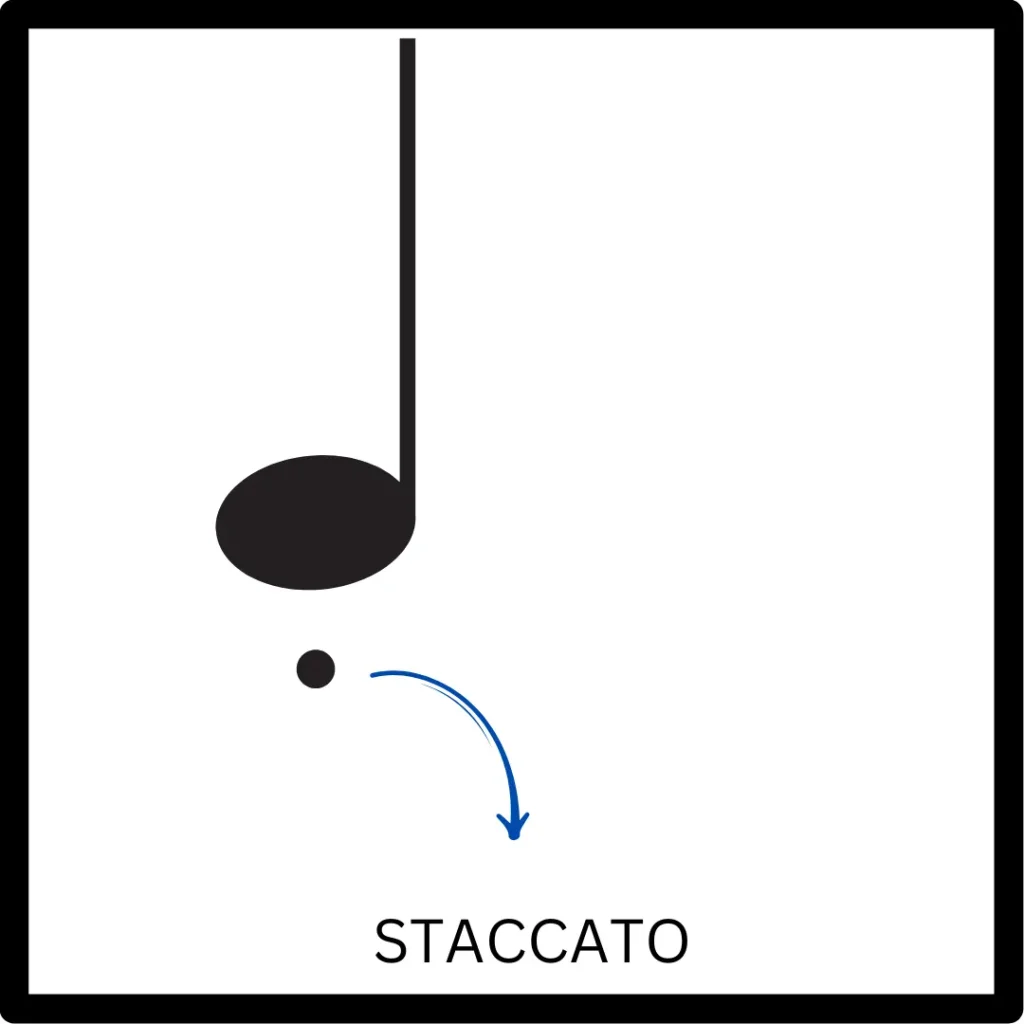
Staccato Articulation music indicates that a note should be played or sung short and detached. Staccato- music is one of the Articulation that creates a crisp, separated sound. Staccato symbol is simply a dot above or below the notes.
Hot Tip!
Staccato Music Articulation creates a lively and energetic feel in Music.
Legato (Slur)
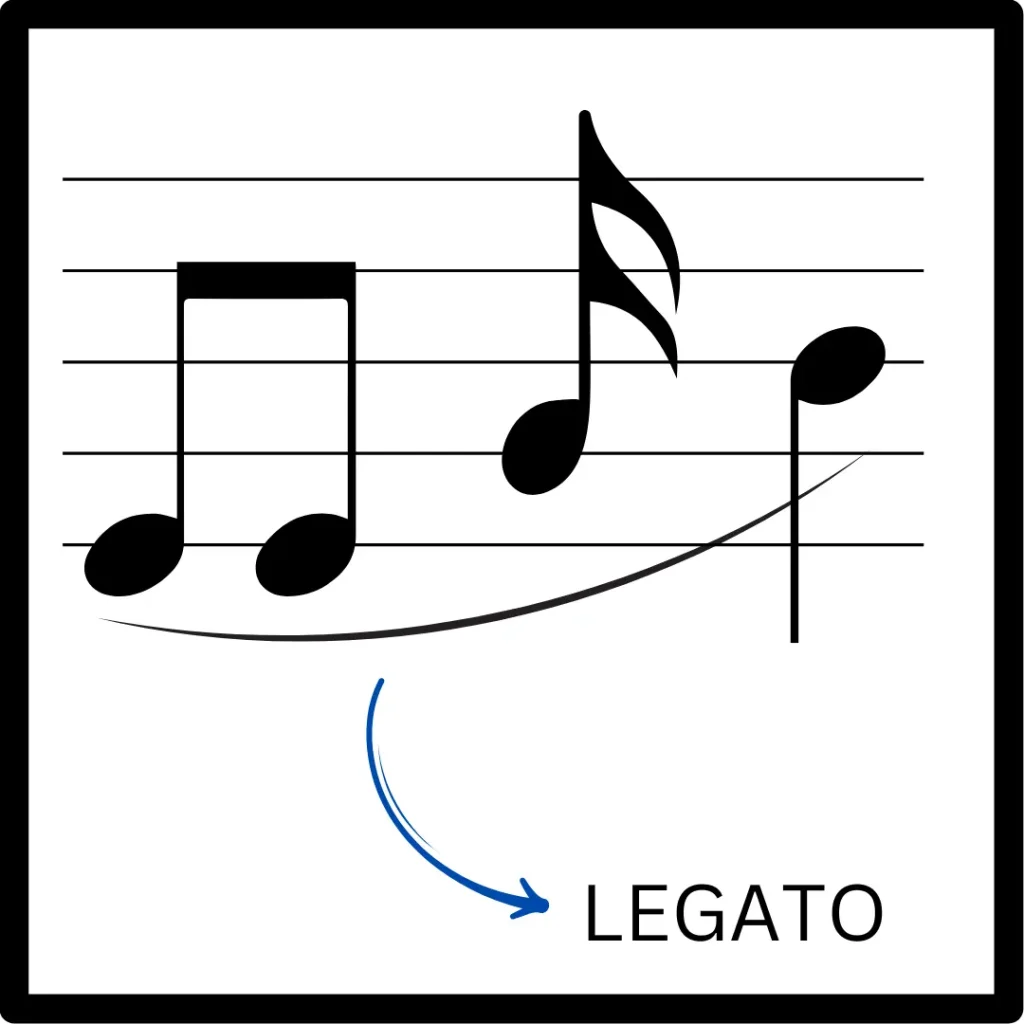
Legato refers to the technique where the notes are sung or played smoothly and connected without noticeable breaks is the Legato definition. This helps in creating a flowing, continuous sound.
Hot Tip!
Legato music brings a smooth and flowing quality to the melody allowing each note to blend into the next!
Accent
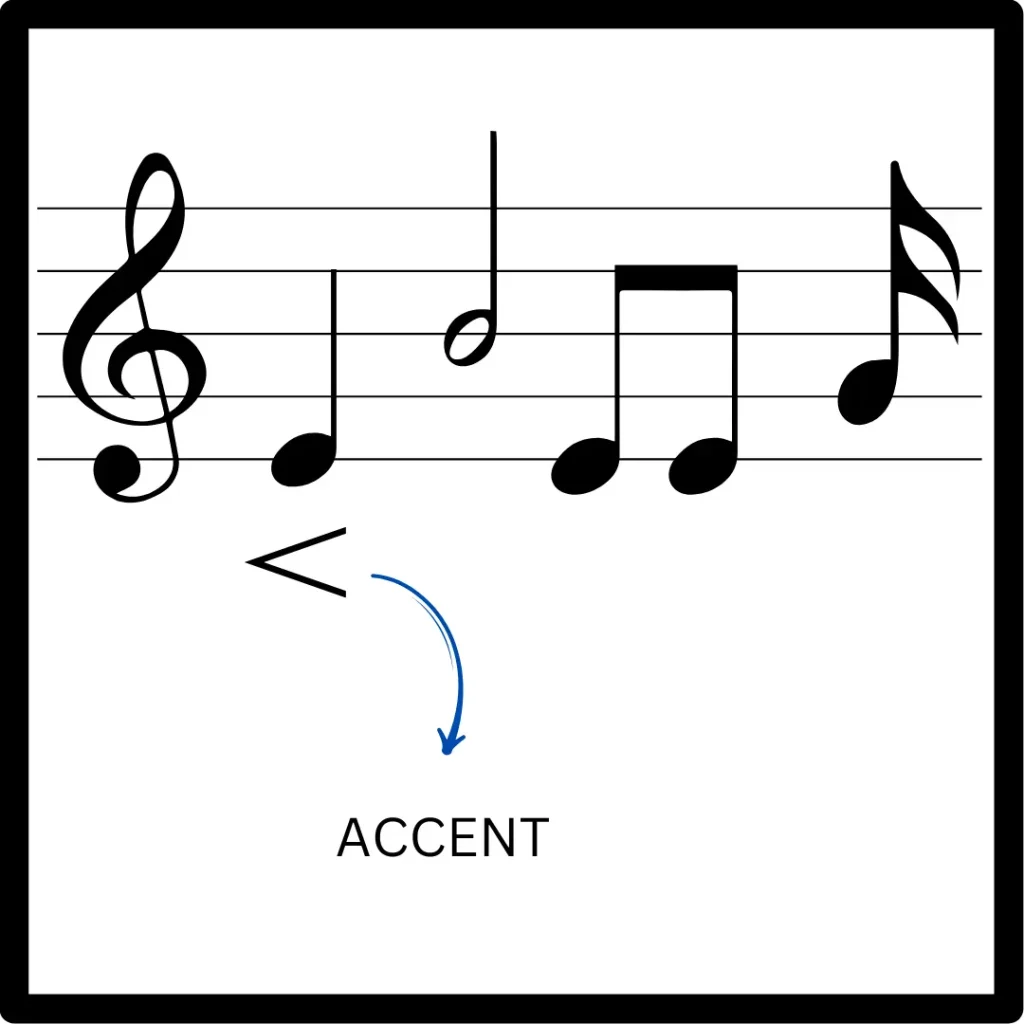
Now, what are accents in classical music? Accents show that a note should be stressed upon with an emphasis. This technique is used to draw attention to a note or make it stand out. Accent marking looks like a ‘greater than’ symbol!
Hot Tip!
Use the accent Articulation technique when you want to highlight the key moments in your performance.
Marcato
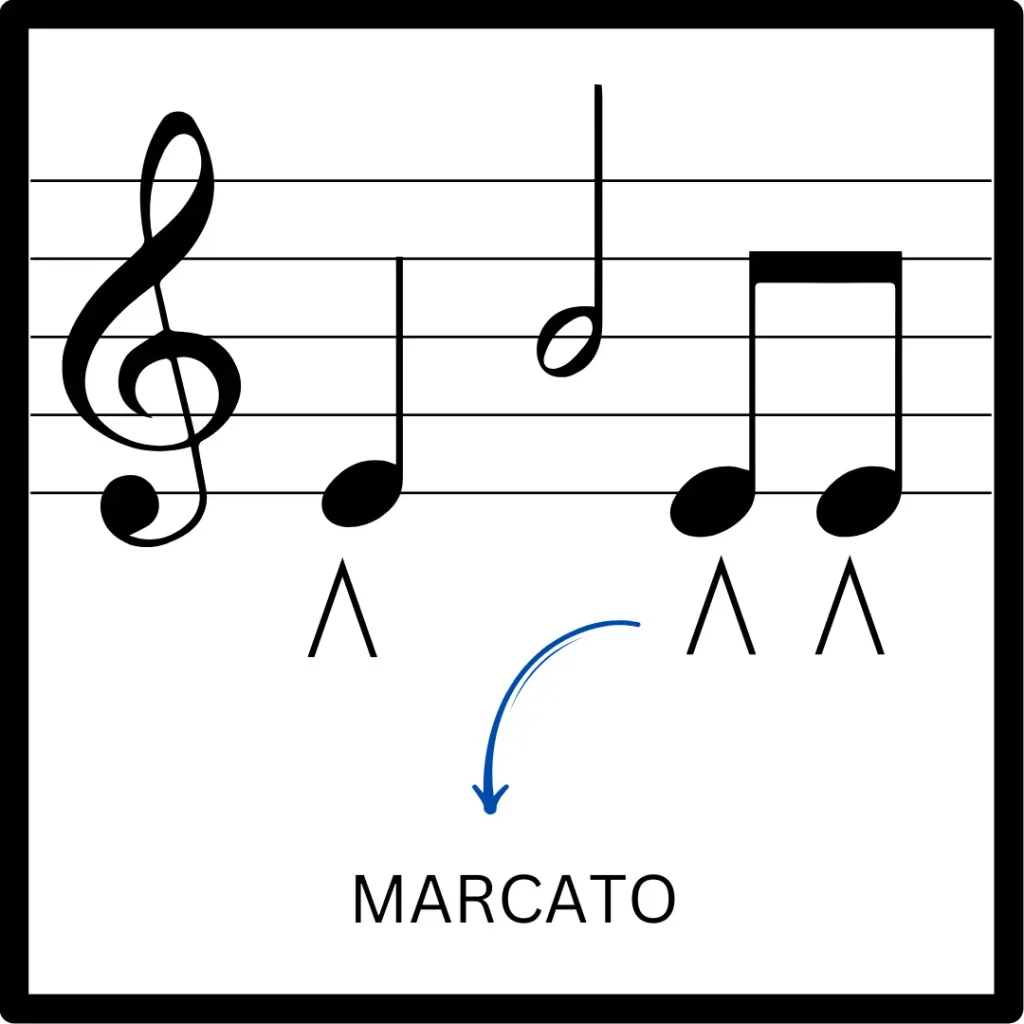
Marcatos are simply accents with dash music. It is a music Articulation symbol looks like a caret. Marcato in music definition is that the notes should be played with force and an emphasis more than an Accent marking.
Hot Tip!
Use the accent Articulation technique when you want to highlight the key moments in your performance.
Tenuto
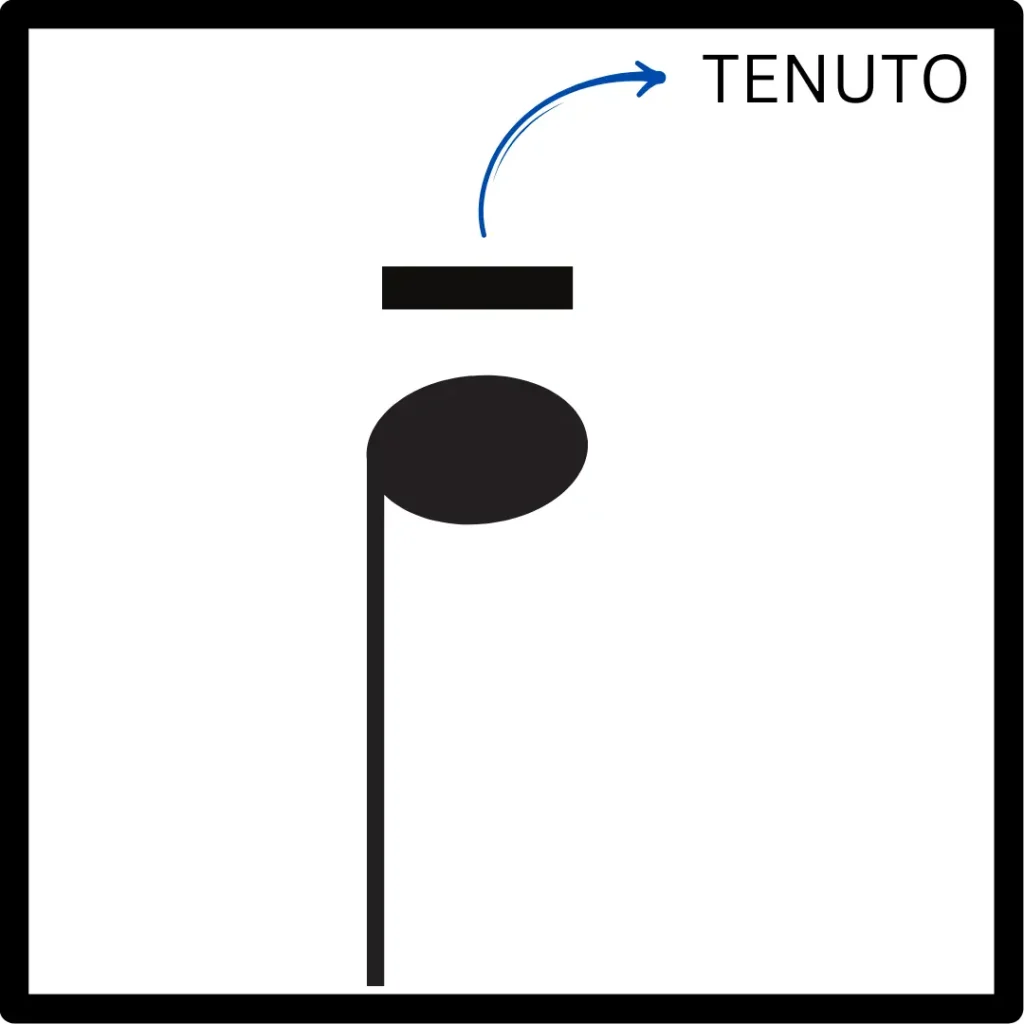
Tenuto is a small horizontal line placed above or below a note. It indicates that a note should be played for its full duration with a slight stress.
Portato
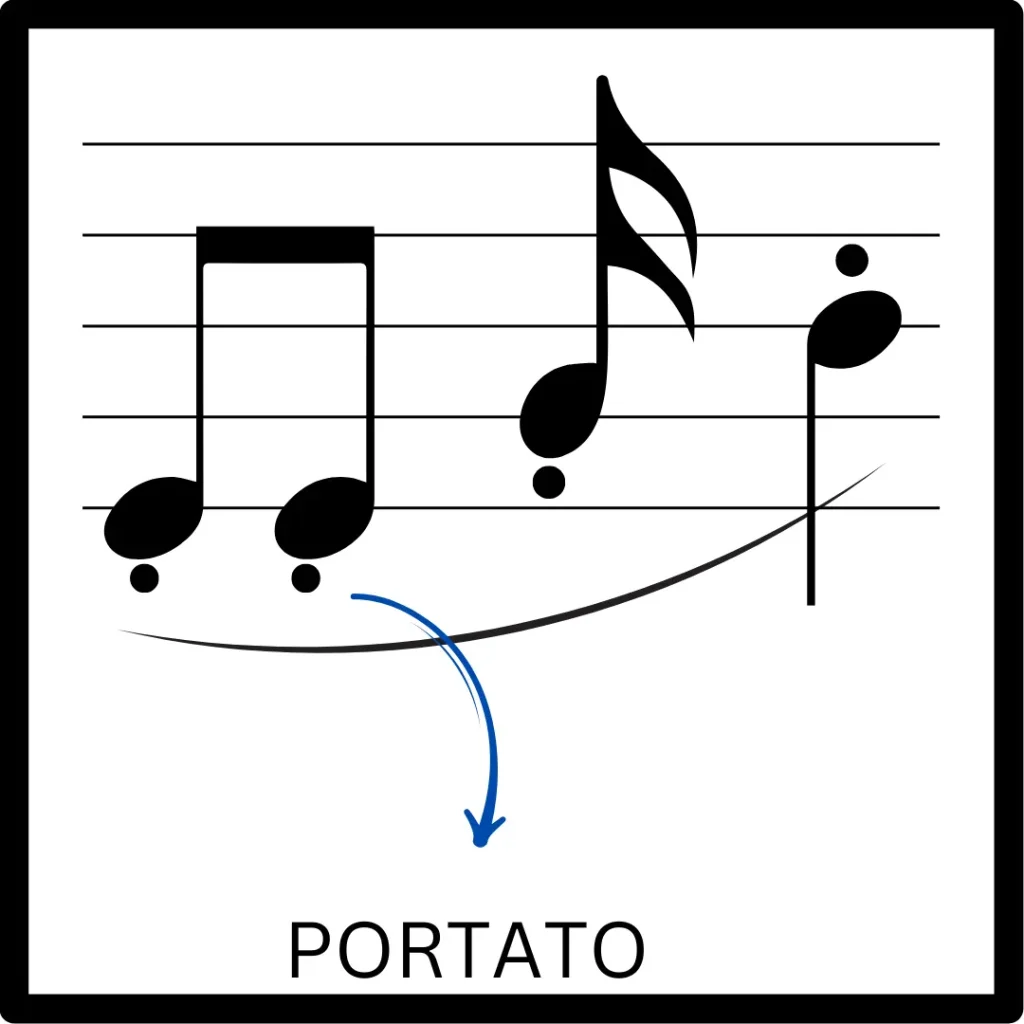
Staccato music definition is closely related to detached notes. Here, Portato is usually known as a slur with dots. It means that the notes should be slightly detached yet still connected and flowing.
Point to remember!
Portato is sometimes referred to as mezzo-staccato Articulation Music
Staccatissimo
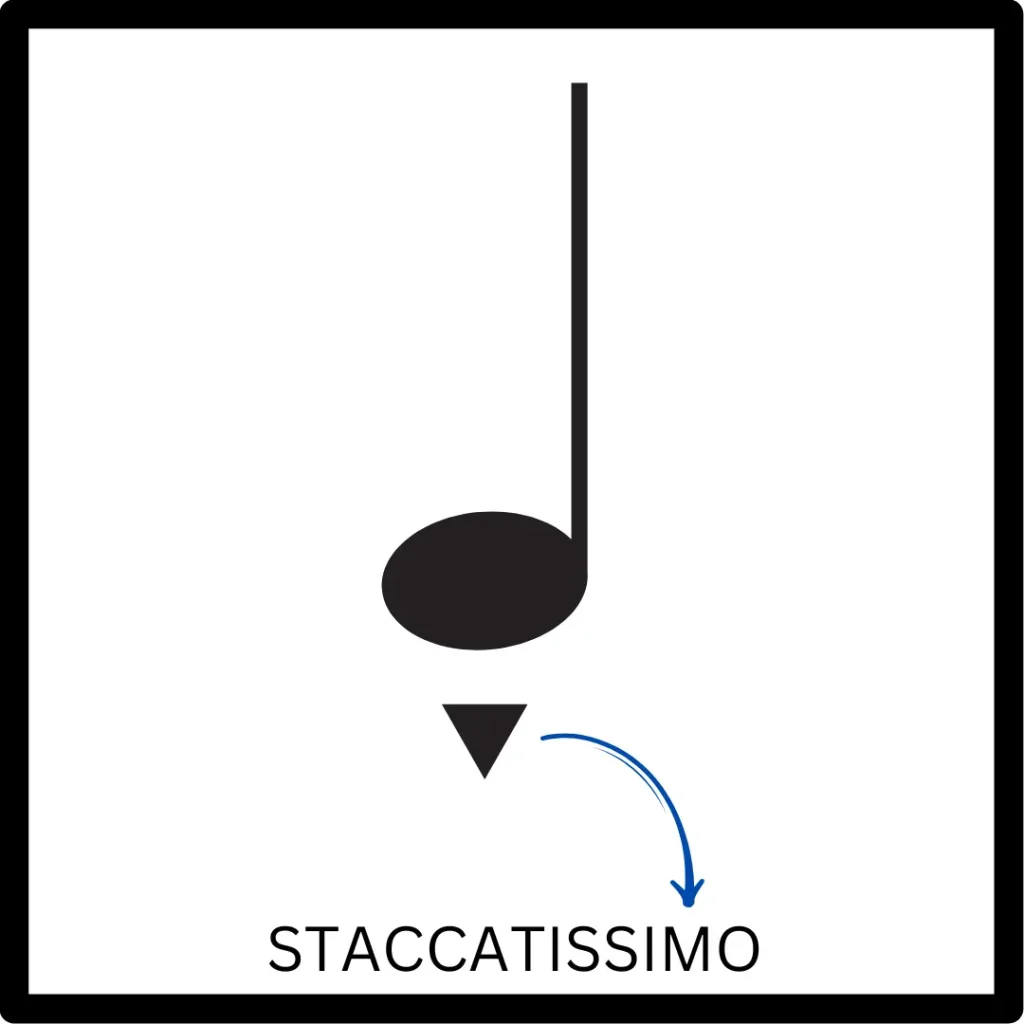
Staccato music Articulation indicates that a note should be played or sung very short and very detached. This creates a very crisp, separated sound. In short, Staccatissimo is extreme staccato music.
Fermata
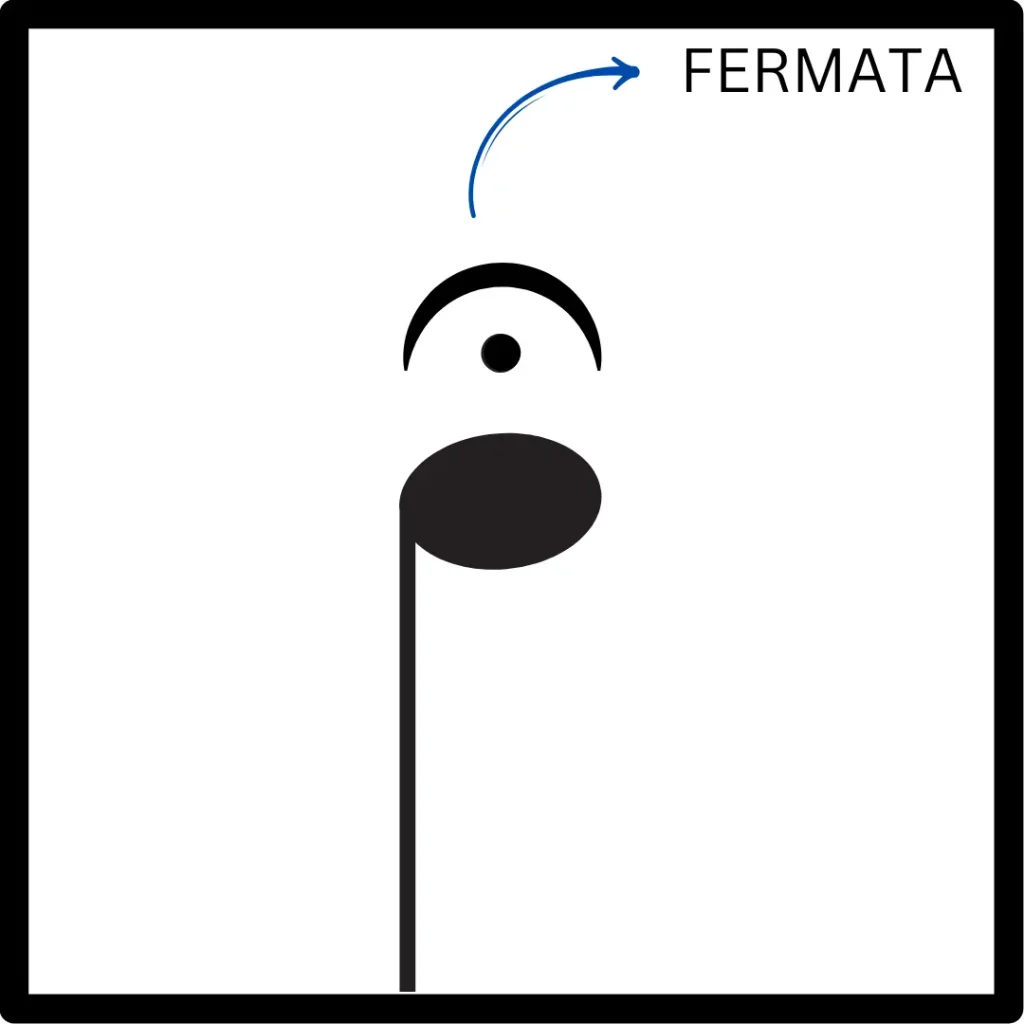
Fermata is an Articulation technique that suggests a performer to hold a note or a rest longer than its usual value.
Phrase mark
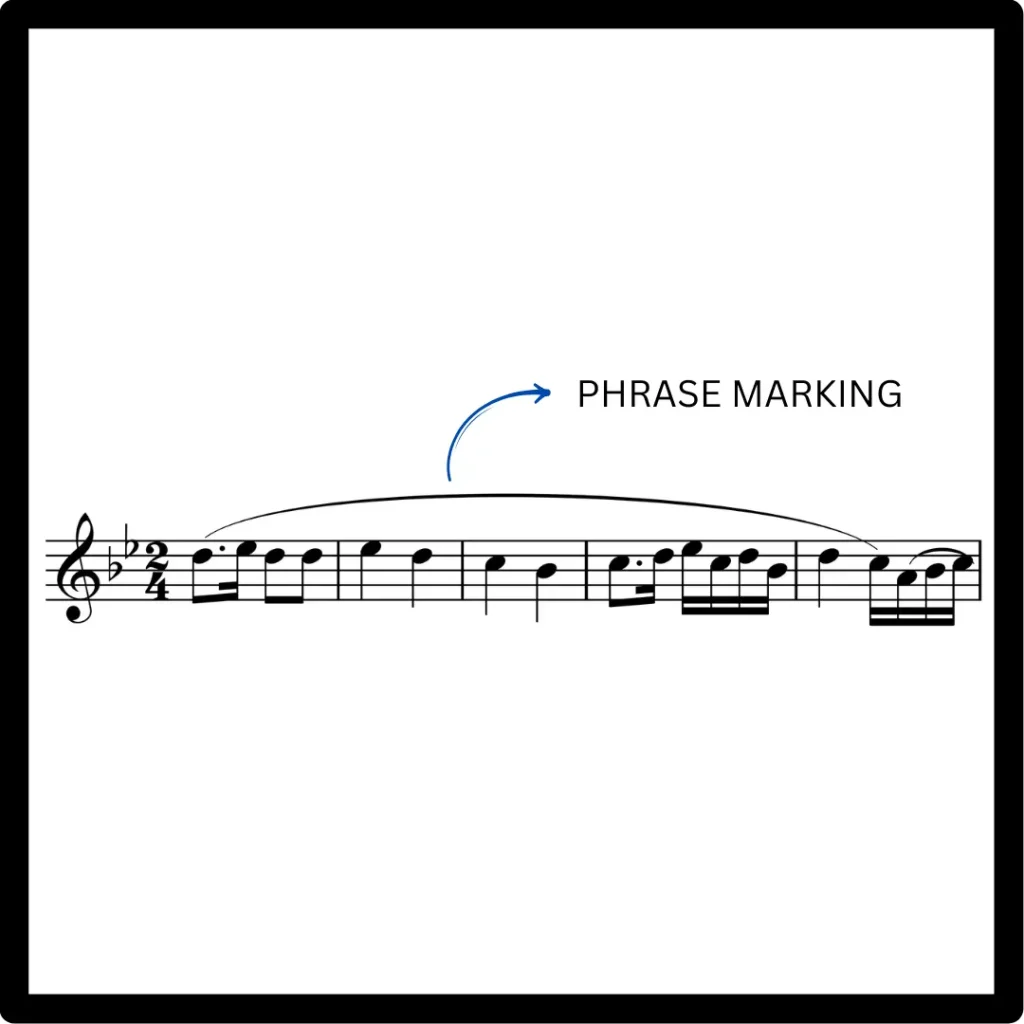
Each melody has a number of phrases in it. A phrase mark, an Articulation in a music example, is a long curved line that shows the group of notes that needs to be played as a musical phrase.
Pizzicato
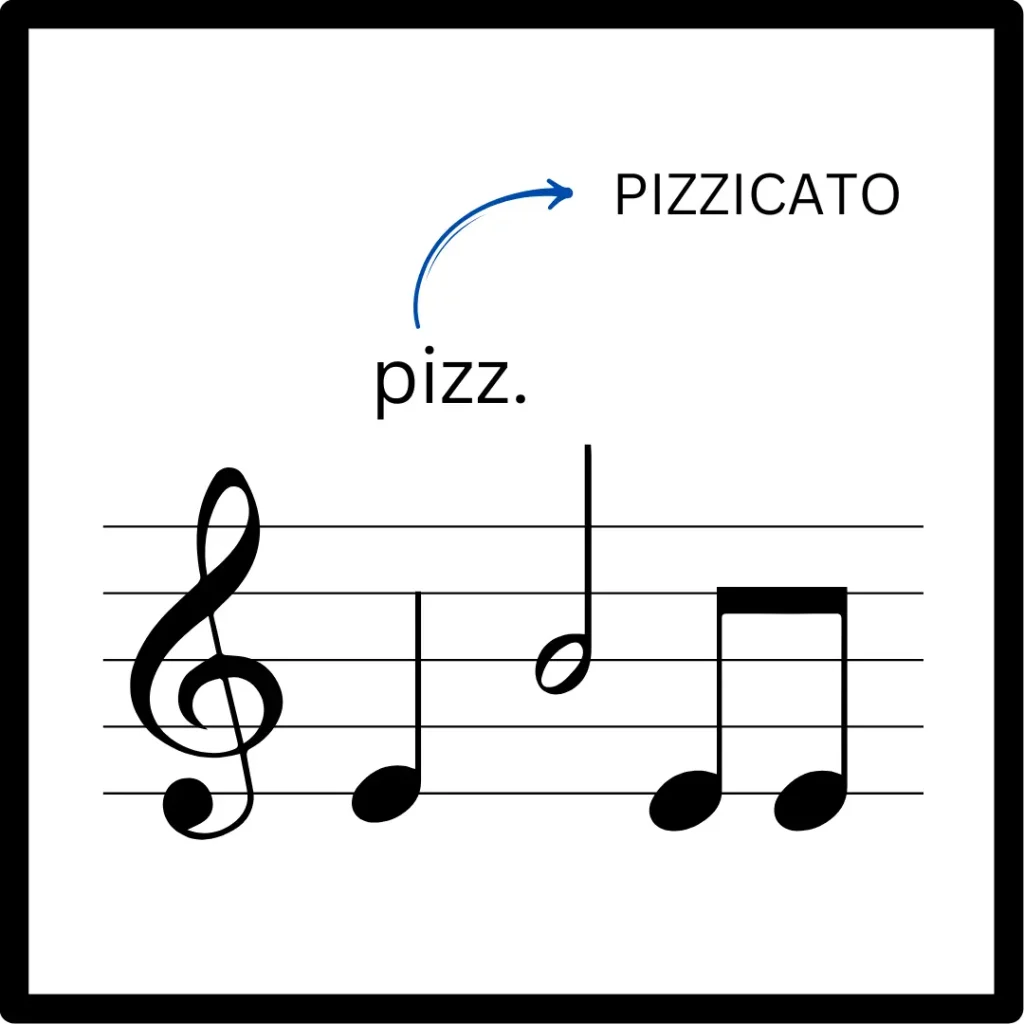
Pizzicato is one of the types of Articulation used for string instruments. Notes with Pizzicato symbols written above or below should be plucked not bowed.
Sforzando
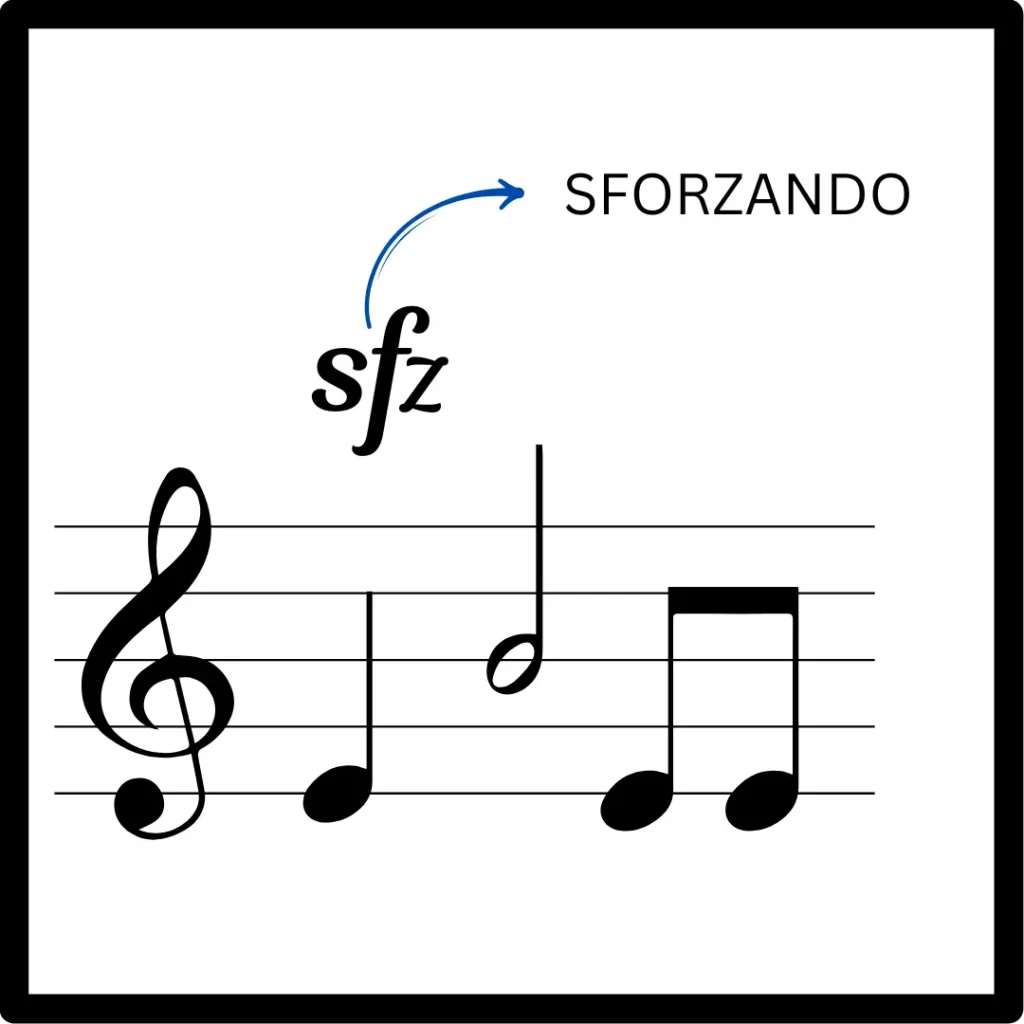
In simple words, Sforzando directs a performer to make sudden, strong emphasis or an accent on a note or a chord – D.
What Is Sole Articulation Music?
Have you ever witnessed an ensemble perform in a vast auditorium ? If not, you should. It is just awesome! The blending of different sounds!
That’s because, a specific directive in music known as the sole Articulation music. It is an Articulation of music used to direct a particular sentient of the ensemble to perform in a specific way together with consistency.
It implies that the groups follow particular techniques like staccato, legato music to help the musicians align in terms of phasing, expression and other types of Articulations in music.
Why Is Articulation In Music So Important?
Thus far, we now know that different types of Articulations in music, some of sheet music terminology, are important for conveying the message and emotion of a song. We also know that in Articulation singing makes it possible for listeners to understand the words and relate to the song’s message. To understand and master the Articulate definition of music, one needs to try and interpret music scores and vice versa.
Moreover, Articulation markings enhance the overall performance in terms of musicality and stage presentation. It enhances the beauty and expressiveness of the song by giving the melody a more definite and clear cut interpretation. For example, A vocalist contributes to the harmonious interpretation of the song by Articulating each syllable with clarity and intention, just as a professional instrumentalist does with each note. All these makes Articulation an important aspect in music.
Is Articulation Important In Singing?
Yes it is. Singing Articulation helps a great deal in stylistic perception. We all know that different musical genres and traditions have their own unique styles and Articulation techniques. For instance, western classical vocal music has crisp enunciation.
Singing in the Jazz music genre has loose phrasing, and think about hip-hop and rap. They have precise rhythms. For sounding authentic ,Articulation must be understood by a singer to meet the stylistic demands of a certain genre. Now let us discuss the habits and techniques you can pick up to articulate your singing.

Did You Know?
Articulation is just not for singing and for musical instruments, it also has great effect in public speaking.
Tips For Improving Articulation In Singing
All you need is a variety of singing vocal range exercises and vocal clarity exercises, a bit of language awareness, and tons of practice to improve Articulation in singing. These following methods and tips helped me a lot and I’m sharing them with you.
1. Proper Vowel Placement
Vowels is so important when it comes to Articulation. To get that right, one must pay attention to the way vowel sounds are shaped. This also leads to a very good resonance. To improve your flexibility and control over the production of vowels, practice vowel placements through tons of Articulation exercises for singers that are mentioned below.
2. Clear Pronunciation of Consonants
You should pay attention to accurately and clearly speaking consonants without compromising the flow of melody. Vocal clarity exercises like tongue twisters and consonant-vowel placement exercises are the best place to begin. Practicing these exercises helps you to focus on certain consonant sounds.
3. Correct Enunciation of Words
Learn how to pronounce the words in the song’s original language with at least almost perfect diction. A very important point to note is that you take regional accents and dialects into account while trying the local language. I recommend getting assistance from online sources for pronunciation and then try to sing the melody.
4. Dynamics and Articulation
Did you know that dynamics and Articulation in singing go hand in hand. Singers try to modify the Articulation’s clarity and intensity to meet the written dynamics for expressing the emotions. Try using different voice intensities while keeping your Articulation clear.
5. Breath Control
This is yet another way to improve articulation in singing. You have to work on phrasing and breath control to correctly portray the lyrics natural flow while trying to protect the continuous flow of the melody. For proper breath control you can practice breathing exercises and techniques.
6. Precise and Consistent Flow of Articulation
The level of keeping up with the Articulation through the entire performance is challenging. The trick is ,try to enunciate each vowel sounds, consonant clearly, and with the proper phrasing throughout the song. Also keep in mind the phrases need to be followed quite strictly to have a precise and consistent flow of clear singing Articulation.
7. Expression of Emotions
We know that Articulation in singing can be used to communicate feelings and the song’s mood. You can try a variety of Articulation techniques like tone color, timbre, and voice texture and not just dynamics, to express any particular feelings or mood while singing. Expression of emotions works great for legato music.
8. Practice and Practice
Practice and try to use Articulation techniques in both your warm-up exercises and get it right during your actual performance. Practicing vocal clarity exercises, singing diction exercises can help you in improving vocal Articulation. Make a recording of yourself singing, then listen to it and try to find areas that need to be worked on.

Did You Know?
Artificial intelligence mostly relies on Articulation structures while recognising speech.
What Are Vocal Articulation Exercises For Singers?
I must say that there can be nothing better than vocal Articulation exercises for singers. Also trying to combine the above mentioned tips and subtleties can make your Articulation 10x better.
- Get your vocal cords warmed up with vocal warm-up exercises to improve the flexibility of your lips, mouth, jaw. increase the clarity of pronunciation with few tongue twisters. These are my go to practice tongue twisters.
- I slit a sheet, a sheet, I slit.
Upon a slitted sheet, I sit. - Peter Piper picked a peck of pickled peppers
A peck of pickled peppers Peter Piper picked
If Peter Piper picked a peck of pickled peppers
Where’s the peck of pickled peppers Peter Piper picked? - Fuzzy Wuzzy was a bear. A Fuzzy bear was Wuzzy. Fuzzy Wuzzy had no hair. Fuzzy Wuzzy wasn’t very fuzzy, was he?
- A really leery Larry rolls readily to the road.
- I slit a sheet, a sheet, I slit.
- Sing scales for improving vowels and consonant placements. Try to clearly pronounce and form each vowel sound (ah, ae, eh, oh and oo ). Pick any key and try to hold each vowel for at least 10 seconds to develop the habit of correct formation of the vowels.
- It is always better to break the musical piece into segments and practice them separately to get the Articulation accurately. While doing so, it is also easier to work on the words.
- Try Lip trills and tongue trills along with other Articulation exercises that help a lot by loosening your jaw muscles and lip muscles.
Conclusion
The main goal of Articulation in music is bringing out the tiniest details of clarity and precision. We also say that it helps in communicating the intended emotions and feel of a writing and its melody. From pronunciation to phrasing and from dynamics to modulation, everything plays a vital role in Articulation. To understand these kinds of musical concepts easier and better, enroll with us today!
FAQs
Define Articulation in music?
Articulation in music refers to the way musical notes and phrases are played or sung in terms of precision and clarity.
Define legato?
Legato is an articulation technique which directs that notes be sung or played smoothly and connectedly.
What does Staccato mean?
Legato is an articulation technique where the notes are sung or played detached and crisp.
What does a dash above a music note mean?
dash above a music note means that the notes are sung or played a little longer than its note value.
Define Accent music?
An accent in music refers to a stress on the notes for dramatic effect.
Give us the Marcato meaning?
Marcato in music definition is that the notes need to be played with a strong emphasis.
Related blog: Solfege

